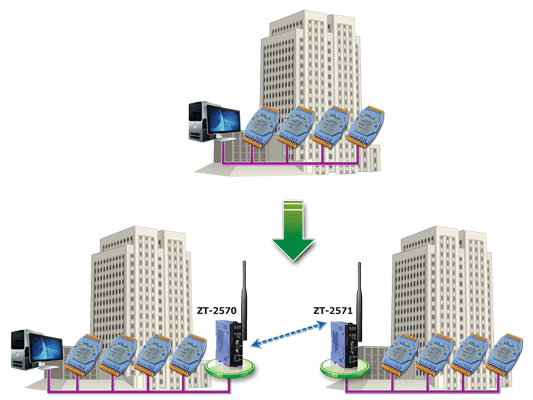|
|
|
|
|
|
|
|
| |
|
|
|
|
|
|
|
|
|
|
|
|
|
|
|
|
|
|
|
|
|
|
|
|
|
|
|
|
|
|
|
|
| |
|
|
|
|
|
|
|
|
|
|
|
|
|
| |
 |
FAQs |
|
|
|
|
|
|
|
| |
|
|
|
|
|
|
ZigBee is a specification based on the IEEE 802.15.4 standard for wireless personal area networks (WPANs). ZigBee operates in the ISM radio bands, and it defines a general-purpose, inexpensive, self-organizing, mesh network for industrial control, embedded sensing, medical data collection, smoke and intruder warning, building automation and home automation, etc. There are three different types of ZigBee devices in a ZigBee network:
There are three topologies defined in the IEEE 802.15.4: standard, Star, Cluster Tree and Mesh.
|
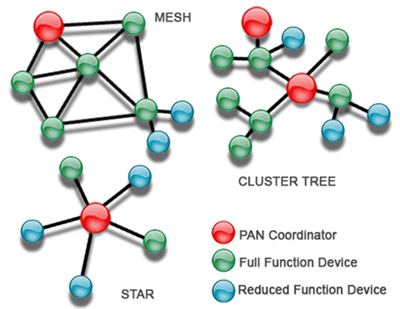 |
| |
| ZigBee uses a basic master-slave configuration that is suited to the dynamic mesh networks of many infrequently used devices that talk via small data packets. Up to 256 nodes are allowed. |
| |
While ZigBee is focused on control and automation, Bluetooth is focused on connectivity between laptops, PDA’s, and the like, as well as more general cable replacement. ZigBee uses low data rate and a low power consumption, and works with small packet devices; Bluetooth uses a higher data rate and a higher power consumption, and works with large packet devices. Compared to Bluetooth, ZigBee networks can support a larger number of devices and allows a longer range between devices.
SST-2450 is used for long distance wireless applications (the maximum distance is 2 Km), and is suitable for simple half-duplex networks. ZigBee supports various network topologies, such as star, cluster tree and mesh. It also supports repeater functionality in redundancy systems.
ZT-2570/ZT-2571 is a Ethernet/RS-485/RS-232 to ZigBee Network converter. It enables RS-232/RS-485 devices to be wirelessly and easily connected to a new or existing system.
ZT-2570 is net-host and ZT-2571 is net-slave. It also supports various data formats and Baud Rates that can be configured via a Windows-based GUI utility. The ZT-2570/ZT-2571 can implement an ad-hoc, star or mesh network topology.
In some existing systems that use an Ethernet/RS-485/RS-232 network, it is sometimes difficult to extend the new devices due to building structure issues, wiring problems or other reasons. The ZT-2570/ZT-2571 can be easily added to an existing system in order to extend your network.
ZT-2550/ZT-2551 is a RS-485/RS-232 to ZigBee Network converter. It enables RS-232/RS-485 devices to be wirelessly and easily connected to a new or existing system.
ZT-2550 is net-host and ZT-2551 is net-slave. It also supports various data formats and Baud Rates that can be configured via a Windows-based GUI utility. The ZT-2550/TB-2551 can also implement an ad-hoc, star or mesh network topology.
In some existing systems that use a RS-485/RS-232 network, it is sometimes difficult to extend the new devices due to building structure issues, wiring problems or other reasons. The ZT-2550/ZT-2551 can be easily added to an existing system in order to extend your network.
|
| |
|
| |
For advanced wireless applications, repeaters and a mesh are required in order to build a more flexible and reliable network. The ZT-2510 can be used to avoid an obstacle that may be located between two wireless devices or to extend the wireless transmission range. |
| |
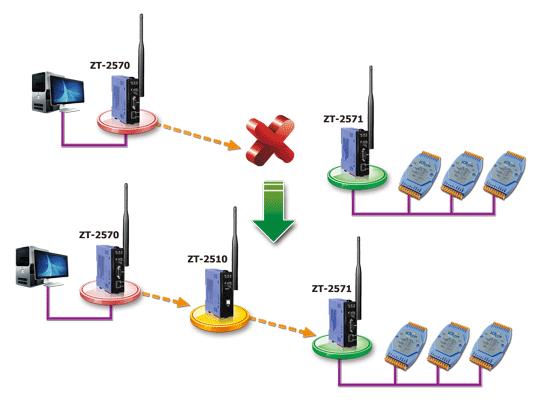 |
| |
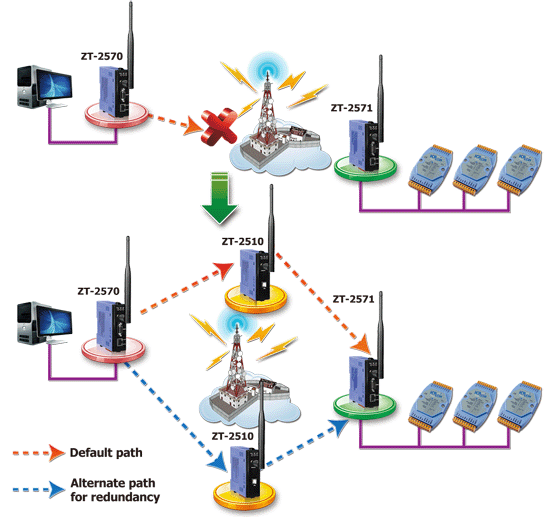 |
| |
The mesh feature is the most important function for wireless transmission. Wireless transmission is greatly affected by humidity, temperature, weather, and obstacles, etc. A mesh network topology is needed to overcome such interference, especially in an industrial environment. The benefits of using a mesh topology are shown below: |
| |
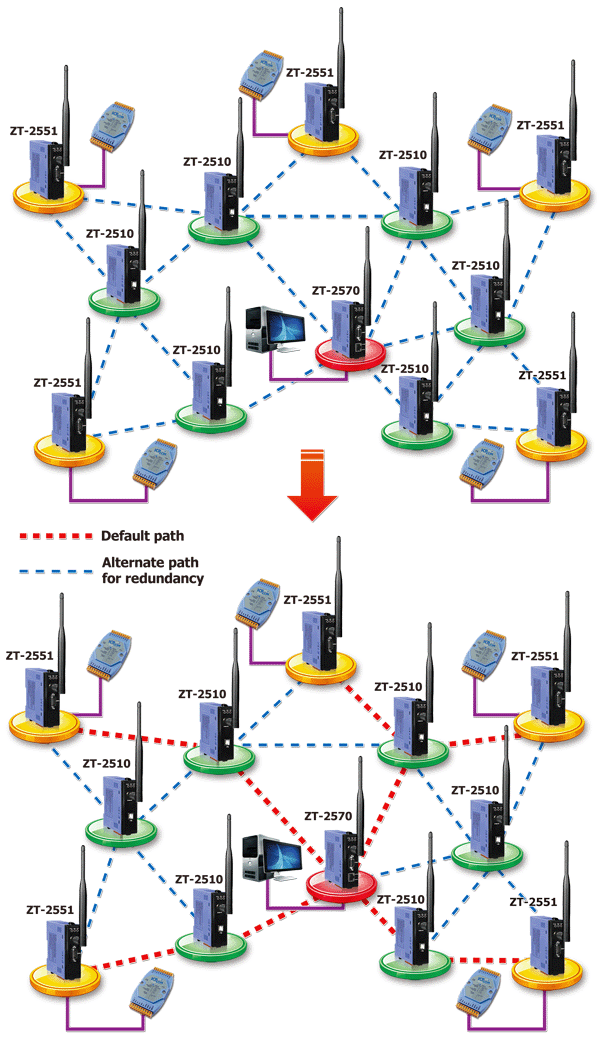 |
| |
- When mesh network discovers a new node, it will automatically incorporate it into the current network.
- If a node in bad communication, the mesh network will route the data through an alternate path using another node.
- Adding additional repeater nodes to your network enables each node to have more than two possible paths for transmission. It also allows a redundancy to be incorporated into the system in a much simpler way than with other types of system.
|
| |
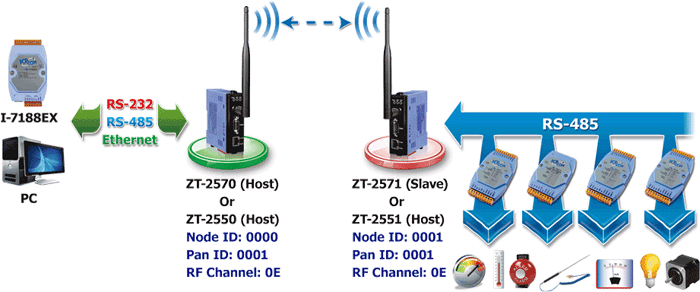 |
| |
| P2M: peer to multi |
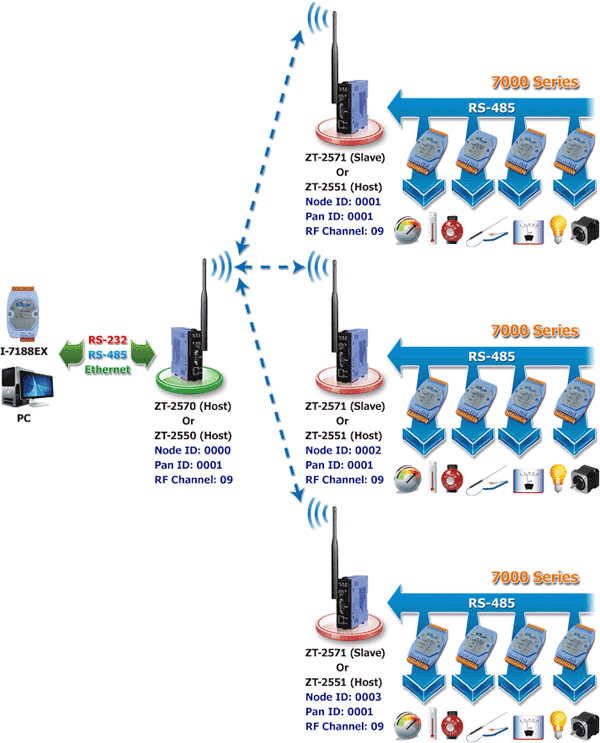 |
| |
| |
|
| |
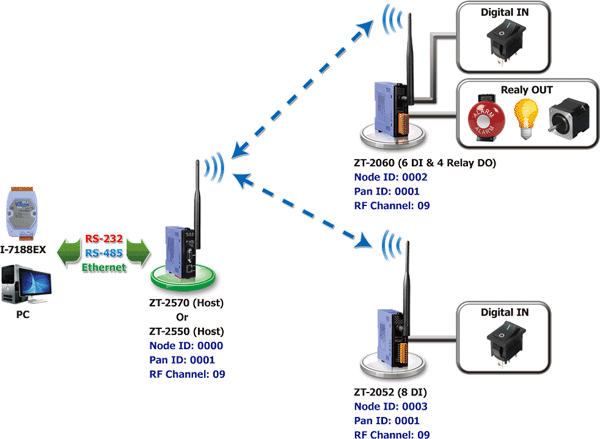 |
| |
 |
| |
ZigBee AIO |
|
Wireless 6-ch RTD Input Module with 3-wire RTD Lead Resistance Elimination * |
|
Wireless 8-channel Analog Input Module with High Voltage Protection * |
|
Wireless 8-ch Current Input Module with High Common Voltage Protection * |
|
Wireless 8-ch Analog Input Module with High Voltage Protection * |
|
Wireless 4-ch Voltage/Current Output Module * |
|
Wireless 4-ch Voltage Input, 2-ch Voltage Output and 2-ch Digital Output Module * |
ZigBee DIO |
|
Wireless 4-ch PhotoMOS Relay Output and 4-ch Open Collector Output Module * |
|
Wireless 14-ch Isolated Digital Output Module * |
|
Wireless 8-ch Isolated Digital Input Module with 16-bit Counters * |
|
Wireless 14-ch Isolated Digital Input Module * |
|
Wireless 8-channel Isolated Digital Input and 8-channel Isolated Digital Output Module * |
|
Wireless 6-ch Isolated Digital Input and 4-ch Relay Output Module * |
ZigBee Digital Pair-connection (Router) |
|
ZigBee Pair-connection to the 8-ch Isolated Digital Input Module * |
|
ZigBee Pair-connection to the 14-ch Isolated Digital Input Module * |
|
ZigBee Pair-connection to the 8-channel Isolated Digital Input and 8-channel Digital Output Module * |
|
ZigBee Pair-connection to the 4-ch Isolated Digital Input and 4-ch Relay Output Module * |
ZigBee Sniffer |
|
ZigBee Sniffer * |
ZigBee Repeater |
|
ZigBee Repeater * |
ZigBee Converter |
|
RS-485/RS-232 to ZigBee Converter (Host) |
|
RS-485/RS-232 to ZigBee Converter (Slave) * |
|
Ethernet/RS-485/RS-232 to ZigBee Converter (Host) * |
|
Ethernet/RS-485/RS-232 to ZigBee Converter (Slave) * |
|
USB to ZigBee Converter (Host) * |
| * Asia Only |
|
| |
| |
| |
|
|







